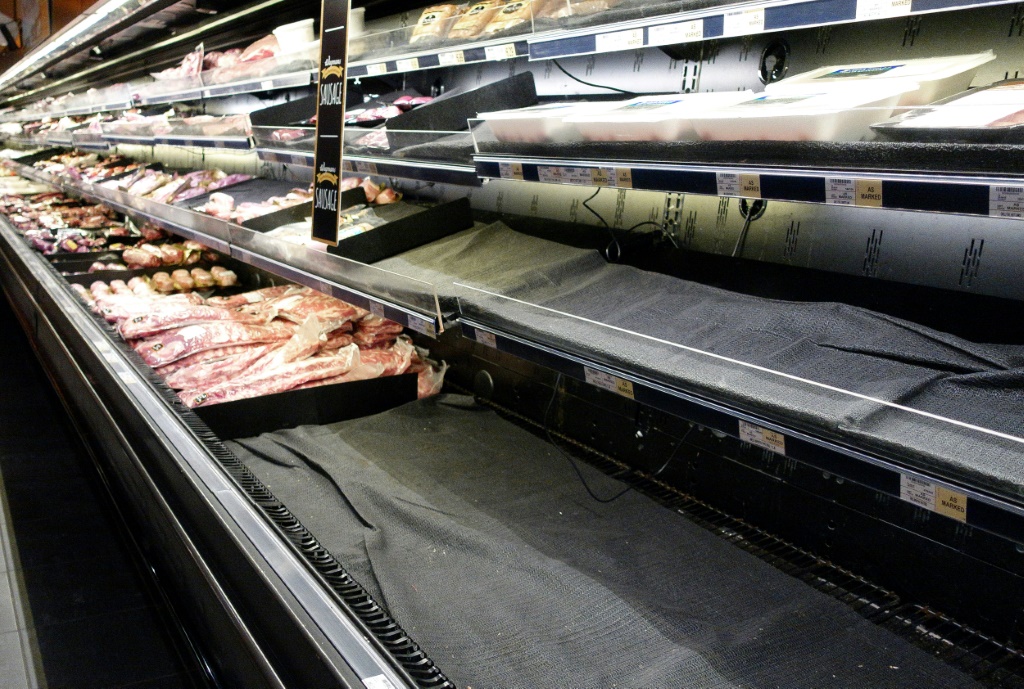As the Omicron variant of Covid-19 sweeps the United States, empty supermarket shelves have become the latest sign of the pandemic’s ongoing disruption to the country’s supply chains.

“It’s not as bad as Sunday but there are still plenty of empty shelves, lots of products are missing,” Justin Toone, a regular shopper at a Giant supermarket in the Washington suburb of Bethesda, Maryland, told AFP.
Shortages have been a recurring feature of the Covid-19 pandemic in the United States, with a run on toilet paper marking its early days, but a wider range of items have gone out of stock lately, particularly in areas struck by bad winter weather like snow storms.
“Last week for several days in a row, there was nothing, no fruit, no vegetables in this Giant store and also in all grocery stores around,” Toone said.
Honey, eggs, milk and meat disappeared from the shelves in nearby stores.

Patrick Penfield, a professor of supply chain management at Syracuse University, said that previous Covid-19 waves affected different parts of the country over a period of time, allowing grocery stores to adjust their supply chains.
“Since the Omicron variant is so contagious, it’s impacting the entire United States all at once. So many US grocery stores and food producers are dealing with employees being out sick, or being asked to quarantine,” he said.
Further up the supply chain, there are issues producing enough food, delivering it and even unloading it once it gets to the grocery stores.
This has left grocery stores to adapt by restocking shelves with what they have in stock and, for items that are in short supply, limiting how many they put out so customers don’t buy them all at once.
– ‘Plenty of food’ –
Parts of the country that face disruptive weather are most vulnerable to such shortages, Penfield said.
Grocery stores are most likely to run out of perishable goods like fresh produce that can’t be stockpiled, hence why shelves in some Washington-area stores remained empty days after a recent snowfall.
The United States is seeing massive numbers of new Covid-19 cases as Omicron tears through the population, and Penfield warned that shortages at grocery stores could persist until the end of March, assuming “everything goes back to normal and we have no new variant.”
The National Grocers Association (NGA), which represents independent players in the food distribution industry, said the challenges businesses nationwide have faced finding enough employees “strain critical industries, including grocery and the food industry at large.”
In a recent survey of their 1,500 members, some reported operating for brief periods at half capacity during the height of the outbreak.
“While there is plenty of food in the supply chain, we anticipate consumers will continue to experience sporadic disruptions in certain product categories as we have seen over the past year and half due to the ongoing supply and labor challenges,” the NGA said in an email.









